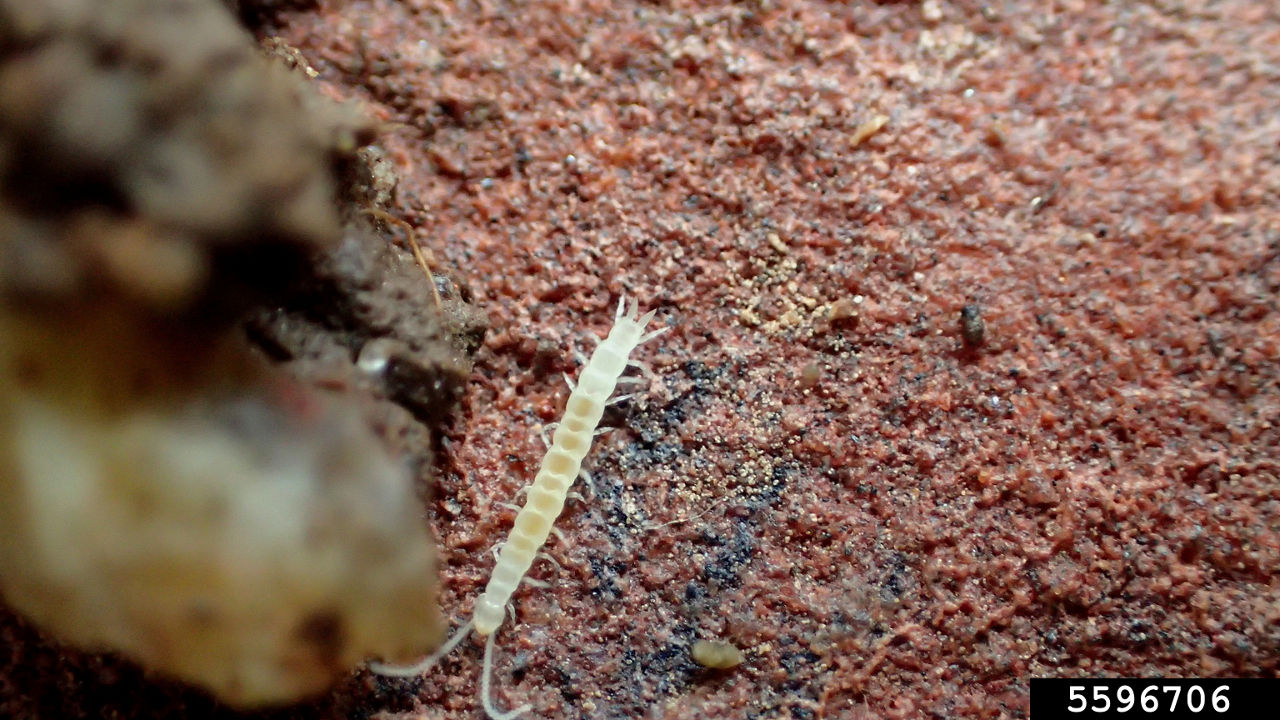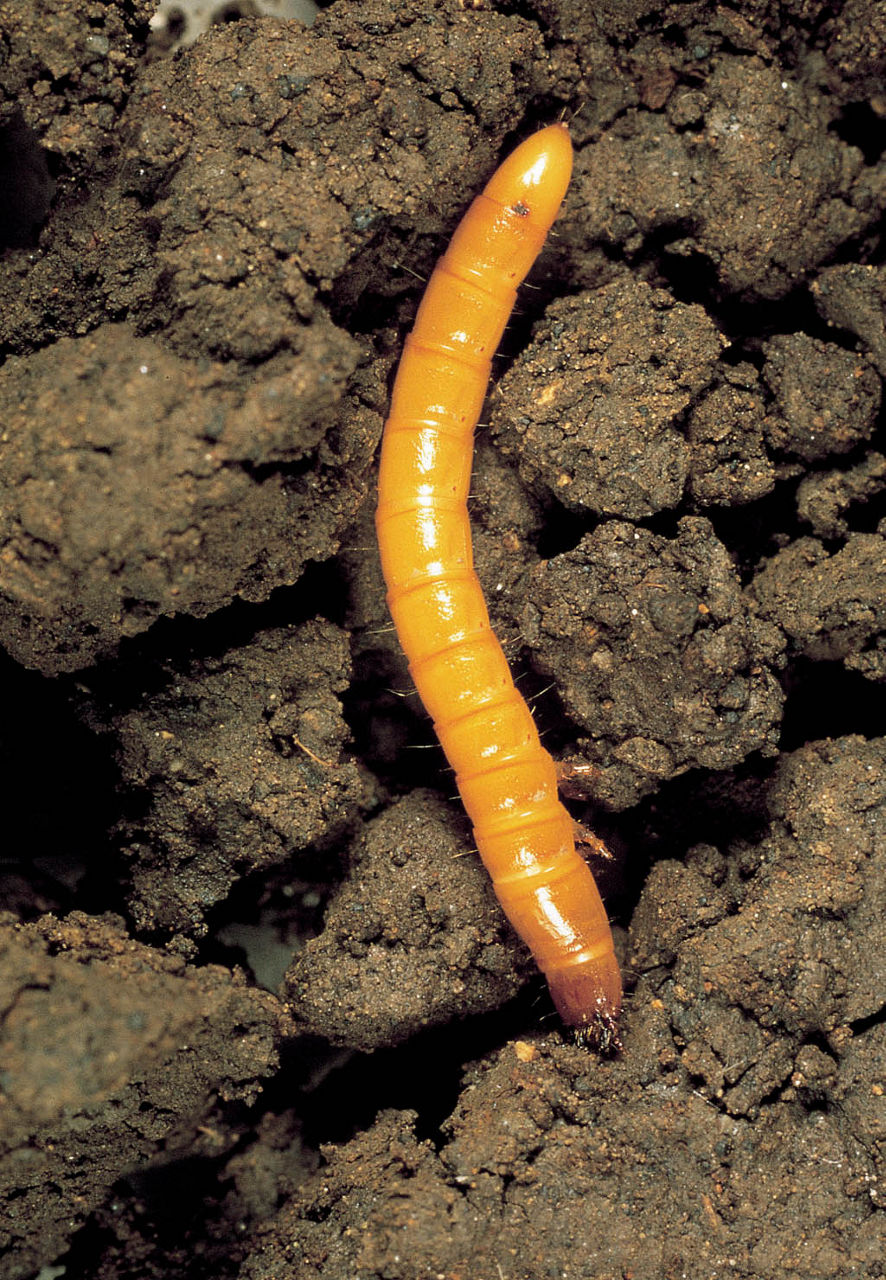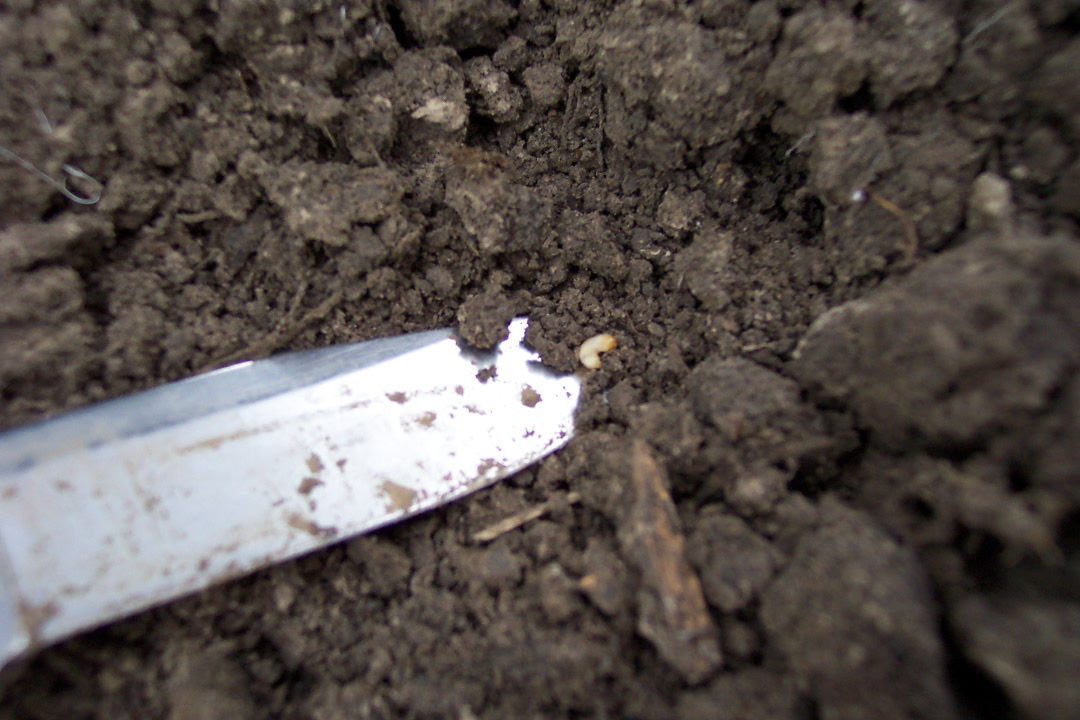Soil Inhabitants to Watch for When Planting Corn into a Previous Forage or Grass Crop
May 3, 2024
As corn starts to emerge and grow there are a variety of early season soil insect larvae and arthropods to be aware of such as grubs, garden symphylan, wireworm and grape colaspis. These soil inhabitants are often associated with fields that have been a pasture, forage, or grass crop for more than one year. They feed below the soil surface on corn roots and/or seed and require digging up soil around the plant to inspect the roots for infestation or symptoms. Some aboveground symptoms that can be observed to indicate presence of belowground feeding include purpling, wilting, and reduced stand loss.
Identification and Injury Symptoms
White grubs: The body of grubs are soft, plump, white to grayish with a brown head, have six legs, and are up to an inch long. When disturbed they curl into a C-shape. In high populations, pruned roots can reduce water and nutrient uptake. Aboveground feeding symptoms include the purpling of seedling corn leaves and stem, and wilting. In populations that exceed one or more per cubic foot, plant stunting and stand loss may occur. Injury is greatest in early planted fields due to early plant development. There are three distinct white grub larvae that may be present – true white grub (larval stage of May or June beetles), annual white grub (larval stage of masked chafer beetles), and the larval stage of Japanese beetles. Knowing how to identify each species is important for future management. The true white grub resides in the soil for two to three years before pupating to the adult; therefore, spring-time feeding can be much longer compared to the other two. And, with this longevity, they have the potential to cause crop damage to future crops. The other two pupate within the year and usually are less invasive. Adult Japanese beetles feed on corn silks. Observation of the (posterior) raster setae pattern can be used to distinguish between the species (Figure 1).

Garden symphylan: Symphylans are not insects but arthropods, and are more closely related to millipedes and centipedes, they can also be referred to as “garden centipedes”. A mature symphylan is very small, less than a 1/4 inch in length, has 12 pairs of legs and antennae that look beaded. Nymphs look like adults but have 6 to 11 pairs of legs depending on age. They spend their entire life in the soil and live one to two years. Symphylans typically effect relatively small areas from 1/4 of an acre to several acres, rarely effecting an entire field. Symphylans feed on root hairs and in some cases can cause crop loss.

Wireworm: Wireworms get their name from their appearance as larvae are yellow to reddish-brown, with a shiny hard and smooth jointed body that are wire-like (Figure 3). Wireworms range in length from 1/4 inch to 1 1/2 inch in length and 1/8 inch wide. Adult wireworms or click beetles are hard-shelled, black or brown, and make a clicking sound. The larvae feed on seeds, developing seedlings, roots, and underground stems (Figure 4). Injury caused to corn can be stunted roots with brown discoloration, stunted growth, aboveground wilting from reduced water and nutrient uptake, and holes in stems (Figure 4). Feeding on larger roots leaves a small tunnel and visible trails.


Grape colaspis: Look like small white grubs, with a soft, plump slightly curved body, white-brown coloration with bunches of hair on bumps (Figure 5). They are about 1/8 to 1/6 of an inch in length with three pairs of short legs. Adults are oval shaped beetles that are striped and yellow brown. In the spring, the larvae feed on root hairs and main root surfaces. Aboveground plant symptomology includes stunting, wilting, purpling, yellowing or browning leaf edges, and in high populations can lead to plant death and reduced populations. Injury typically is observed early in season. Larvae may have pupated by the time damage is noticed making it difficult to diagnose; however, a few pupae may still be observed.

Monica Marrs
Channel Agronomist
1110_377851